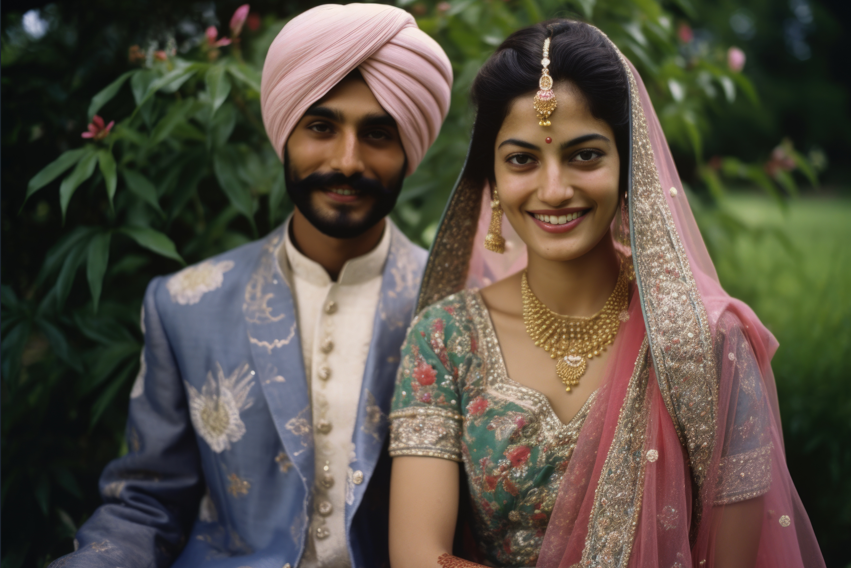The Sari: A Timeless Tradition of India

©️ Freepik
What do you know about Sari?
The traditional Indian sari, a breathtaking symphony of color and fabric, is more than just clothing; it’s a timeless tradition deeply woven into the very essence of India. Its history stretches back millennia, mirroring the nation’s rich cultural tapestry, evolving with each generation while retaining its unique charm.
The Traditional Indian Sari is Rooted in Antiquity
The sari’s story begins in the Indus Valley Civilization, flourishing around 2800-1800 BCE. Evidence suggests that early women draped themselves in similar garments, hinting at the sari’s ancient origins.
Over time, the sari evolved from a three-piece ensemble – a lower garment, a shoulder veil, and a chest band – into the elegant drape we know today. Sanskrit literature and Buddhist texts from the 6th century BCE reference the “satika,” an early form of the sari.

More Than Just Fabric: How Regional Drapes Reflect Local Customs
The beauty of the sari lies not only in its history but also in its breathtaking diversity. Unlike a uniform garment, the traditional Indian sari celebrates regional identities.
From the classic Nivi drape of Bengal to the sophisticated Maharashtrian style with its nine yards of flowing fabric, each region boasts its own unique draping technique. These variations, passed down through generations, reflect local customs, aesthetics, and the very spirit of the place.

Did You Know You Can Drape The Sari Up Into 100 Ways?
One might assume that mastering the sari requires hours of practice and many safety pins. However, the beauty of the sari lies in its deceptive simplicity. Forget the stereotypes – the traditional Indian sari is surprisingly easy to wear.
With hundreds of draping styles, each with its name and significance, there’s a technique for every occasion. Whether it’s the elegant Gujarati style with its fishtail pleats or the simple yet graceful Konkani drape, learning the art of sari draping is a journey of cultural immersion.

The Sari is More Than Fabric: It’s a Symbol of Identity and Heritage
The sari transcends mere clothing; it is a powerful symbol of social and cultural identity. Worn by women from all walks of life, it transcends socio-economic barriers. It’s a garment passed down through generations, carrying cherished memories and family traditions.
A grandmother’s wedding sari, intricately woven with love and stories, becomes a priceless heirloom, connecting past, present, and future.

A Vibrant Economy and a Legacy Preserved
The Traditional Indian Sari industry is a cornerstone of India’s rich textile heritage. Millions of skilled handloom weavers dedicate their lives to creating these exquisite pieces of art.
Each sari, painstakingly crafted with intricate designs and vibrant colors, is a testament to generations of expertise passed down through families. Wearing a sari is not just about fashion; it’s about supporting this vibrant and time-honored tradition.

Is It a Cultural Appropriation or Appreciation to Wear The Traditional Indian Sari?
In today’s globalized world, the question of cultural appropriation often arises when discussing the sari. While respecting cultural sensitivities is crucial, most Indians welcome anyone to embrace the sari with respect, not as a costume.
By learning about the rich history and regional variations, one can appreciate the sari not just as a beautiful garment but as a symbol of India’s enduring cultural heritage.

The Traditional Indian Sari is an invitation to delve into the heart of India. It’s a testament to the country’s artistic legacy, a celebration of its diverse regions, and a reminder of the enduring spirit of its people.
So, the next time you encounter a woman draped in a stunning sari, remember – it’s not just clothing; it’s a story waiting to be told.
You might also like to read: The Indian Ringneck Parakeet: How Can You Take Care of One?



